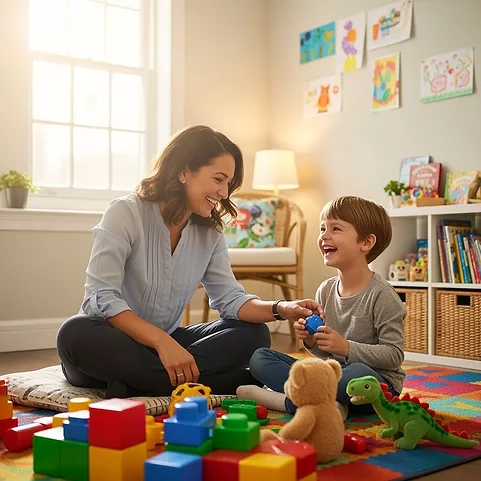Supporting Better Self-Esteem in ADHD
Nikhil Rao, MD, MSc. Regional Medical Director, CCS Family Behavioral Health, Portland, OR.
Alexandra Wadford, MSN. Unity Center for Behavioral Health, Portland, OR.
Dr. Rao and Ms. Wadford have no financial relationships with companies related to this material.
Erica is a 14-year-old with inattentive-type ADHD who was once a strong student, broadly liked by teachers and peers. Since starting middle school, her confidence has steadily declined. She’s withdrawn from friendships and extracurriculars, alternating between striving for perfection and giving up entirely. Her parents notice she’s become increasingly self-critical and often describes herself as “not good enough.”
Youths with ADHD face a hidden crisis beyond attention symptoms. Compared to neurotypical peers, these children experience significantly more low self-esteem in academic and social domains, linked to poor quality of life and increased risk for depression and anxiety (Betancourt J et al, Clin Psychol Rev 2024;108:102394).
Understanding why self-esteem suffers requires looking beyond medication. While stimulants remain important, addressing environmental and psychological factors often proves more crucial for building lasting confidence in these young people.
The daily reality of living with ADHD
Children and teens with ADHD lack prefrontal ability to suppress reactions to random events, leading to impulsive and often embarrassing episodes. They feel constantly disrupted by their own hyperactivity, unable to control their bodies or minds in ways that others manage effortlessly.
Kids with ADHD are often judged for things they can’t control. Parents may treat their child’s behavior as willful. Peers may reject them for missed social cues. Teachers might interpret lapses in attention and inadvertent mistakes as low effort, carelessness, or disengagement. This daily negative feedback takes a profound toll. Research shows 30%–50% of youths with ADHD develop mood or anxiety disorders (Spencer TJ, Clin Psychiatr 2006;67:27). However, protective factors—like supportive parents, positive school environments, and structured routines—reduce these risks and build resilience.
Erica is penalized for forgetting homework and teased for failing to follow dress codes. On one occasion she is chastised by her soccer coach when she “zones out” and the other team scores.
Contributors to low self-esteem
Poor self-esteem in ADHD results from social, psychological, and biological factors creating a perfect storm during adolescence.
Social and academic pressures
As children progress through school, academic demands increase dramatically. Middle school brings expectations for sustained attention and independent work, leading to visible mistakes and mounting frustration. Teachers expect teens to function independently, so youths with ADHD struggle with homework while having less time for confidence-restoring activities.
Social relationships become challenging as peer interactions grow complex. Kids with ADHD struggle with impulse control, extended conversations, and contextual cues about appropriate behavior in different settings.
Psychological factors
Youths with ADHD develop distorted self-perceptions, rating their abilities worse than actual performance. This becomes self-fulfilling as adolescence brings increased awareness of symptoms, leading to avoidance, rumination, and self-doubt.
Poor executive control creates a vicious cycle where teens struggle to develop coping mechanisms. Some experience interoceptive deficits—difficulty recognizing internal emotional discomfort—making self-regulation even harder.
Biological vulnerabilities
Kids with ADHD react more negatively to neutral or negative stimuli (Vetter NC et al, Hum Brain Mapp 2018;39:2972–2986). Puberty exacerbates emotional dysregulation, making teens feel more out of control (Pfeifer JH and Allen NB, Biol Psychiatry 2021;89(2):99–108).
Physical factors compound problems. Youths with ADHD are often sedentary with higher obesity rates, yet exercise protects self-esteem (Cook BG et al, J Learn Disabil 2015;48:563–576). Sleep problems are universal—ADHD links to insomnia, sleep apnea, and restless legs. Stimulants impact sleep, creating cycles where poor sleep worsens symptoms and self-esteem.
Eating patterns suffer too. ADHD is associated with selective eating and binge disorders. Stimulants suppress appetite, and these youths eat more processed foods with less protein and fiber (Pinto S et al, Nutrients 2022;14:4332).
Erica feels she can’t keep up academically, has lost friends, and keeps “screwing up.” Dreams of marine biology and meeting boys seem impossible. She reports fragmented sleep, skipping meals, and binging on ice cream at night.
Assessment approach
When evaluating a child’s self-esteem issues, systematically examine biological, psychological, and social contributing factors.
Biological
- Review sleep, diet, activity, medication efficacy, and side effects.
- Consider screening for sleep apnea, thyroid problems, and vitamin D and iron deficiencies.
- Consider metabolic screening for hyperglycemia and dyslipidemia in sedentary or overweight youths as these factors share a bidirectional relationship with mood, anxiety, and ADHD symptoms (Mannan M et al, PloS One 2016;11(6):e0157240; Baranova A et al, Gen Psychiat 2023;36(2):e100996).
- Estimate the stage of puberty and possible premenstrual dysphoric disorder (PMDD).
Psychological
- Screen for mood and anxiety disorders. Some ADHD assessments, such as the Vanderbilt Assessment Scale, look at mood and anxiety. Otherwise, consider formal screening for self-esteem, such as with the Rosenberg Self-Esteem Scale (Rosenberg M. Conceiving the Self. New York, NY: Basic Books; 1979).
- Explore the child’s self-concept and inner narrative—do they express self-doubt, avoid challenges, or feel doomed to failure?
- Assess the child’s understanding of ADHD, its impact on them, and compensatory strategies. Find the child’s strengths and positive connections: What gives them confidence and boosts engagement?
Social and academic
- Examine structural and specific factors (eg, school transitions, friendships, home stress).
- Review IEP/504 implementation and individual teacher relationships.
- Rule out co-occurring learning disorders (which are common in ADHD and may present late in high-compensating youths).
- Assess family dynamics, including parent expectations, strategies, and communication styles.
Building self-esteem: A multifaceted approach
Social and academic interventions
Advocate for academic support, tutoring, executive function training, and neurodiversity-friendly placements for students. Consider social skills training like PEERS for peer relationship struggles. For rejection sensitivity, specialized therapies like radically open dialectical behavior therapy (RO-DBT) help (Gonring K et al, Child Fam Behav Therapy 2017;39(1):19–42).
Encourage activities that highlight a child’s strengths—like art, music, sports, or academics. These provide positive feedback outside typical school struggles. Regularly update accommodations and work with teachers and families.
Psychological support
Provide psychoeducation to kids and families. Parent guidance can reduce conflict, increase acceptance, and support workable structures for managing home, school, and social life. Help the student reach toward self-knowledge and self-acceptance.
Encourage focusing on effort and progress vs fixed outcomes. Help youths separate their self-worth from ADHD challenges; emphasize their strengths and unique qualities. Focus on skill building, problem solving, and validation. Consider module-based therapies with discrete activities and skills, such as mindfulness-based or acceptance and commitment therapy.
Medical and lifestyle interventions
Address sleep interferences, including sinus problems, sleep apnea, and restless legs. Establish good sleep hygiene with limited electronics and consistent routines.
Implement dietary changes: more fiber and protein, fewer processed snacks. Consider meal timing with stimulants and “catch-up feeding” strategies. Collaborate with primary care for premenstrual or metabolic concerns. Develop physical activity strategies, recognizing that exercise benefits both ADHD symptoms and self-esteem.
Medication optimization
Assess medication efficacy. Symptom control is associated with better self-esteem, with youths reporting feeling smarter, better behaved, and more popular on optimized doses of medication (Frankel F et al, J Child Adolesc Psychopharmacol 1999;9:185–194).
Consider alpha-2 agonists like clonidine or guanfacine, which may improve rejection sensitivity in ADHD (Dodson WW et al, Prim Care Companion CNS Disord 2022;24:21r03153).
Erica resumes dance class and completes RO-DBT. She stops doomscrolling in bed and addresses PMDD with her pediatrician. You adjust her stimulants by moving from one large dose, which was wearing off too early and suppressing appetite, to two smaller doses after breakfast and lunch; this helps Erica’s nutritional state while increasing her symptom control during critical parts of the day. Clonidine helps Erica feel less reactive, more composed, and better rested. She has a more positive view of herself.
Carlat Verdict
Children and teens with ADHD experience repeated failures, often feeling terrible about themselves and developing co-occurring mental health problems. Search for and address contributing factors to help these youths build a more positive and resilient sense of self.
Newsletters
Please see our Terms and Conditions, Privacy Policy, Subscription Agreement, Use of Cookies, and Hardware/Software Requirements to view our website.
© 2025 Carlat Publishing, LLC and Affiliates, All Rights Reserved.


_-The-Breakthrough-Antipsychotic-That-Could-Change-Everything.webp?t=1729528747)



